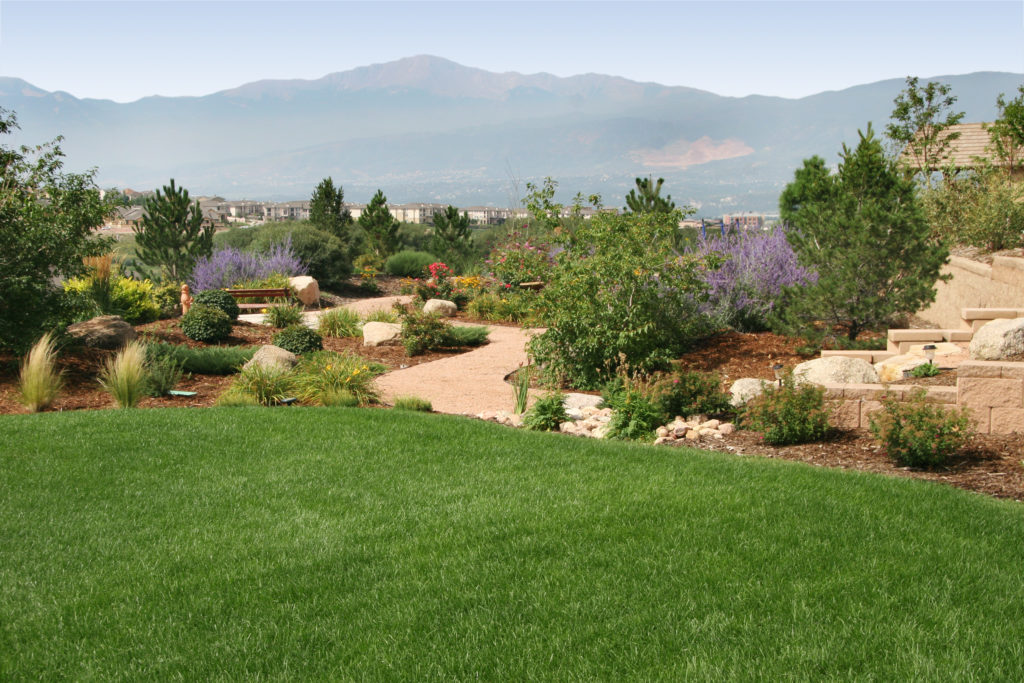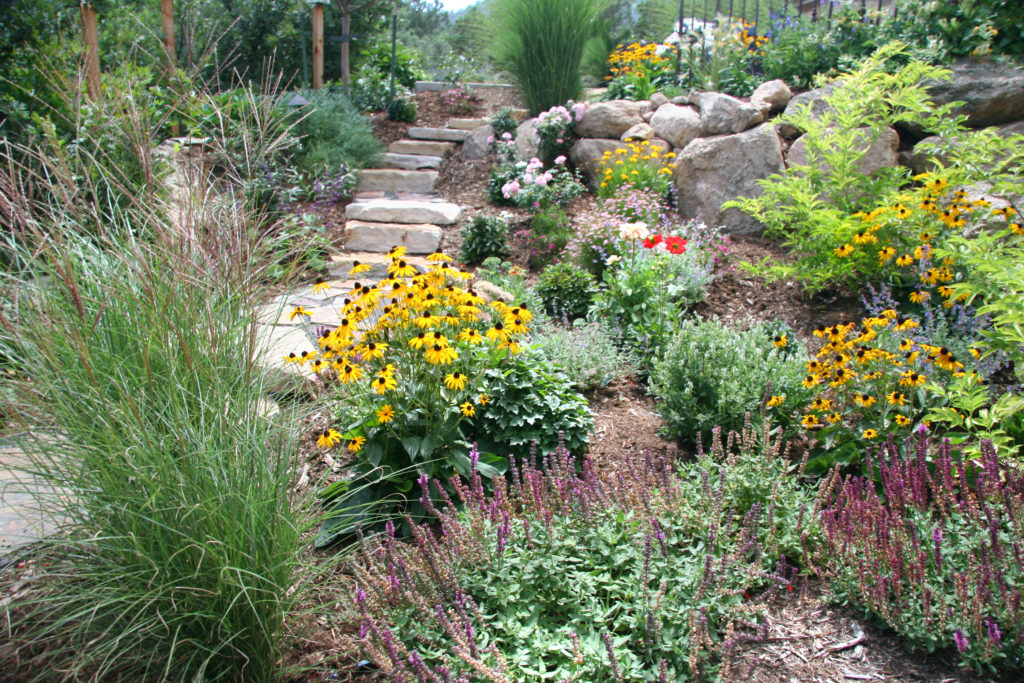Low Maintenance Landscaping Tips For The Environmentally Conscious Homeowner
1. Plant A Shade Tree
Trees are an excellent low maintenance landscaping addition as they mature, growing tall enough to provide shade that aids in several environmental benefits to your property. In those hot summer months, shade trees (deciduous) can reduce your cooling bill while allowing sunlight in during the colder months. In a previous post, we discuss Tree Preservation for homeowners when starting new construction projects; this blog includes the many benefits of embracing trees in your landscape. You can also reference our blog, 5 Best Trees for Residential Landscaping, to guide your decision on selecting a species that will thrive in our semi-arid climate.
Limiting the lawn for plant beds lowers your carbon footprint, and provides beautiful and interesting low maintenance landscaping.

2. Reducing Your Lawn Size Can Reduce Your Carbon Footprint
Living in the semi-arid region of Colorado Springs, Accent Landscapes has become an expert in designing with sustainability in mind. Creating an aesthetically pleasing landscape while reducing your lawn footprint has many benefits. Often homeowners include traditional lawns into their landscape because they are considered low maintenance; the truth is that lawn care is high maintenance and requires weekly mowing, lots of supplemental water, fertilization, weeding, and aerating.
Some would argue that a well-cared-for healthy front lawn increases curb appeal. We ended our Fall 2021 season confidently, realizing this is no longer the case. Homeowners now realize the benefits of including other planting methods with a reduced lawn size. Creating a landscape including a diverse mosaic of planting materials is more aesthetically pleasing, less maintenance, and lends to a healthier landscape. Dedicating a smaller area to lawn space surrounded by alternative planting methods will preserve your landscape’s health and create a wonderful space to enjoy activities.
What are we installing in replacement of the lawn?
We often replace lawn areas with new garden beds, including native or pollinator plants, drought-tolerant xeriscapes, and the use of different types of stones and beautiful low-growing ground cover. Replacing a large portion of your lawn has many benefits that go beyond low maintenance landscaping. To learn more about drought-tolerant landscapes, visit our blog on xeriscape landscape design.
Bright and colorful, plant beds use less water and require less maintenance than lawns.

3. Native Plantings
Most homeowners dream of a well-maintained mature landscape with unique and aesthetically pleasing ornamental plantings. There is often a fear that including diversity in the landscape usually means there is more maintenance. Caring for your landscape should never be overwhelming, and there are ways to achieve diversity while also enjoying a low maintenance garden. We are proponents of GOING NATIVE. Native plants are tough and resilient, which assists in low maintenance landscaping.
Selecting plants that are native to your region automatically gives them a better chance of survival. Including a diverse selection of native plantings in your garden will also increase biodiversity, attracting birds, butterflies, and honey bees. Choosing plants that are complementary to each other and placing them in small drifts will create a cohesive and elegant design. Never include too many varieties; this will bring chaos to the eye and feel tiresome to maintain. Planting in drifts of 3, 5, and 7 will keep pollinators in your garden. Native plants can be accented with non-invasive exotics that perform well in your region.
Not sure how to choose plants? Give us a call and set up a consultation with one of our designers. We will walk you through what plant combinations thrive together in your specific growing conditions.
4. A Well-Maintained Garden
When your landscape is well-maintained, plants are happier, healthier, and more productive. Here are a few tips to keep a well-maintained landscape while reducing your carbon footprint.
- Implement a high-efficiency way to water your landscape (such as drip irrigation). Watering your beds deeply but less frequently will encourage strong root growth and reduce disease-causing moisture on leaves.
- Seasonal maintenance of garden beds, pruning shrubs and perennials, as well as keeping beds weeded.
- Mulch reduces weeding and holds moisture in the soil (this can help your garden survive unusually hot and dry spells). Mulch also delivers instant curb appeal—a fresh layer of well-placed mulch looks neat and well-cared-for.
Choose a natural mulch rather than a dye. Accent Landscapes uses cedar mulch on all projects. Dyed mulch, made from recycled wood, contains chemicals that can be harmful to the earth. Another common mistake by homeowners is over-mulching beds. Garden beds need only about 3" of mulch to suppress weeds. Additionally, piling mulch around the base of a tree invites rot and wildlife into the tree's root flare and diminishes the tree's health.
Adopting all of these low maintenance landscaping practices might sound overwhelming, but even one or two can help reduce your carbon footprint and make your property more self-sufficient and environmentally friendly.